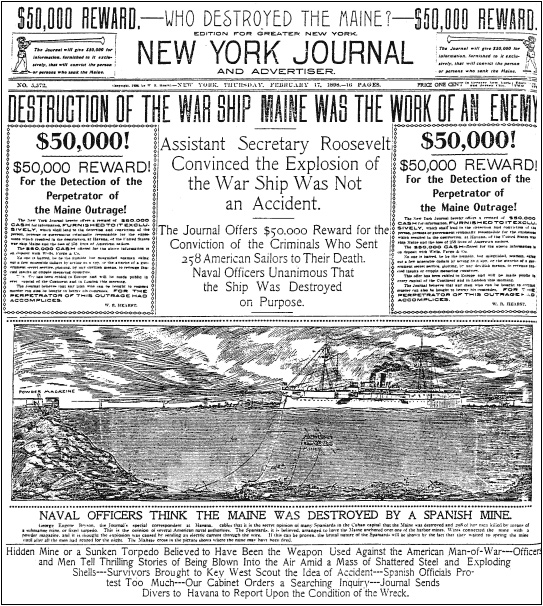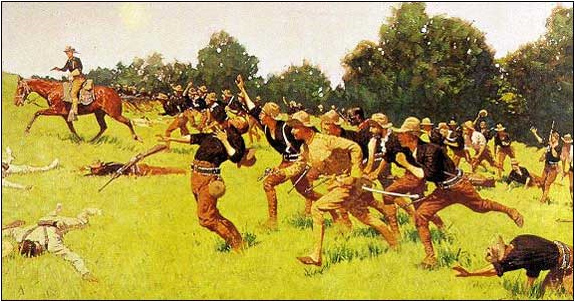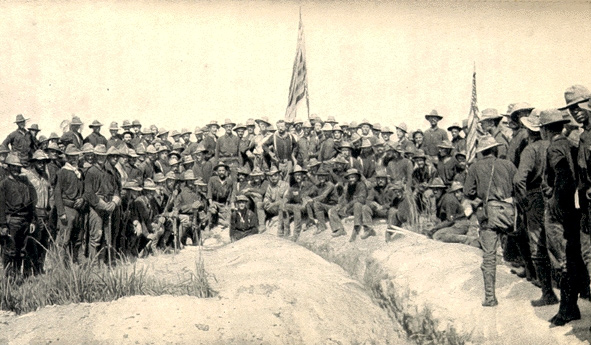
Let's quickly review the Spanish-American War and the events that led the United States to become an imperial power.
Click on the link below and select "Spanish-American War."

![]() The Price of Freedom: Americans at War
The Price of Freedom: Americans at War
On February 15, 1898, the U.S.S. Maine exploded in Havana Harbor and Spain was blamed for the explosion. Although the war was sparked by the explosion, it was fought to secure the independence of Cuba from Spain. By April of 1898, the United States and Spain were at war. This conflict had worldwide impact, and the United States emerged from the war as an imperialist nation.

Source: New York Journal, PBS
Look at the headline and picture on the newspaper above. How would you react if you read this newspaper front page on February 16, 1898? Write your response in your notes.

Source: Charge of the Rough Riders, Frederic Remington, Frederic Remington Art Museum
This painting, Charge of the Rough Riders at San Juan Hill, is a famous painting by Frederic Remington. Known for his paintings of the western frontier of the U.S. western expansion, Remington served as a news correspondent in the Spanish-American War. His paintings are responsible for providing people with an eyewitness account of the war. This painting depicts the Battle of San Juan Hill where the Rough Riders, led by Theodore Roosevelt (seen in tan), won this famous battle.
Analyze the painting Charge up San Juan Hill. Do you believe that paintings like these were effective in illustrating the events of the Spanish-American War? Why or why not?

Source: San Juan Heights U S Army July 1898 Victors Kettle Hill, Library of Congress
This is a photo of the Rough Riders, led by Theodore Roosevelt. Notice the diversity of the soldiers; there were African-American, Native-American, Mexican-American, and Caucasian soldiers who served in this volunteer group of soldiers.
Analyze the photo above, and answer the following questions in your notes. Does this look like any army you might be familiar with? Describe how these soldiers compared to the Cuban Rebels that you observed in the previous photo. Why do you think they were victorious at the Battle of San Juan Hill?
![]()
Look at the map of Central America and the Caribbean below. Locate Cuba by placing your cursor over the island. Notice how close it is to the United States.
Source of Map image: Blank Outline Map of Central America and the Caribbean, Look4
Image of a blank map of Central America and the Caribbean.The United States fought decisive battles against Spain in Cuba. Do you think that the United States had an advantage over Spain in the Spanish-American War? Why or why not?